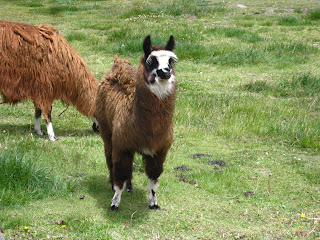I recently gave a 30-minute (more like 45-minute) presentation to my art history class on Latin American artists who lived or passed through New York during the 1920s-1940s. You probably immediately think of Diego Rivera, Frida Kahlo's husband, the legendary Mexican muralist if you've seen the movie about Frida. But there were lots more. I did end up focusing more on the Mexican artists during this time, but there were some from Chile, Argentina, Uruguay, Cuba, and even Ecuador (you might remember I mentioned
Camilo Egas here).
I'm going to break up this post into at least two different posts so stay tuned for the rest. For now, enjoy learning a bit about the New York art scene during the '20s, '30s, and '40s, and how Latin American artists were treated during this time...
New York Art Scene in the 1920s
Art during this time was still relatively conservative in New York. The center of the modern art world was still Paris (and would be until WWII). The only gallery in town that was really showing modern art was Alfred Stieglitz's Gallery 291. H tried to get an avant-garde movement going in NY and would show more than just photography in his gallery. Even though New York wasn't known for its modern art yet, the US as a whole was known as an advanced and modern nation. Also, in case you forgot, Prohibition went from 1920-1933.
New York Art Scene in the 1930s
In the 1930s, the Great Depression raged in the US and around the world. In response, the art movement called social realism that displayed poverty and struggle grew in New York. Some American artists were given support by the government through the Works Projects Administration to create public art at this time. New York also experienced the immigration of artists and intellectuals from Europe who were fleeing unstable situations across Europe. They brought modern art movements with them, such as cubism for example.
New York Art Scene in the 1940s
During this decade, abstract expressionism grew in New York. The city also became a modern art center of the world because Paris was stuck in the middle of WWII. Lots of artists, both North American and Latin American, were influenced by leftist politics.
Latin American Artists Specifically
What I found really interesting was that Latin American artists who came to New York during the twenties/thirties/forties often were already well-known artists in their own countries and in Europe before they arrived in the US. What they did in New York added to their fame, but it didn't start their careers. Museums, like the MoMA, and galleries held exhibits for these artists.
North Americans during this time saw Latin American art, especially art from Mexico, as something exotic and picturesque, even though the artists were following the same art trends that North American artists were following. They just added their own Latin touch to the artwork and North Americans loved it! The Latino art also inspired North American artists and writers to visit Mexico and Cuba to experience the landscape and culture for themselves.
Also, President Roosevelt's Good Neighbor Policy tried to build better relationships with Latin American countries using cooperation and business, rather than military force, to stabilize the region. The government sponsored some exhibits of Latin American art during this time period, too.
One last interesting thing (and then you'll just have to wait until the next installment) was that art during this time influenced one another. As mentioned above, the famous photographer Alfred Stieglitz exhibited modern art work, including caricatures by Marius de Zayas in his gallery. The Mexican caricaturist, Miguel Covarrubias, was influenced by Jazz and Blues music, as well as African-American dancing. And Frida Kahlo loved watching movies and included a famous actor in one of her paintings when she was in New York.
I'll leave you with that wealth of information until next time. I'll list my bibliography at the end of this series so you all can research more.


































